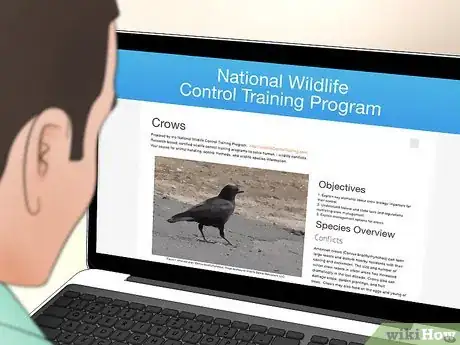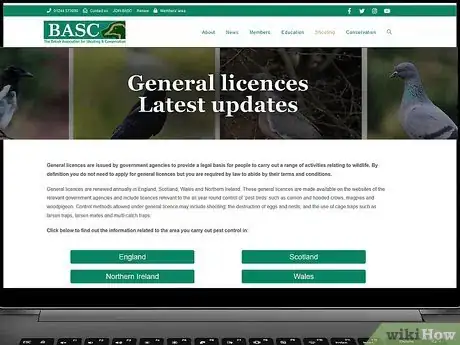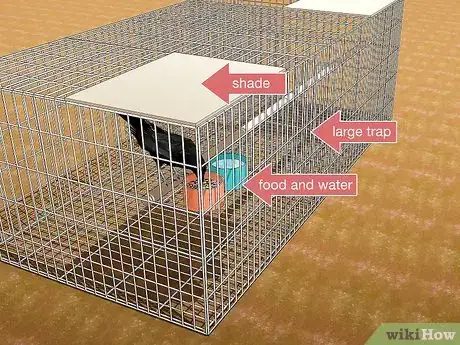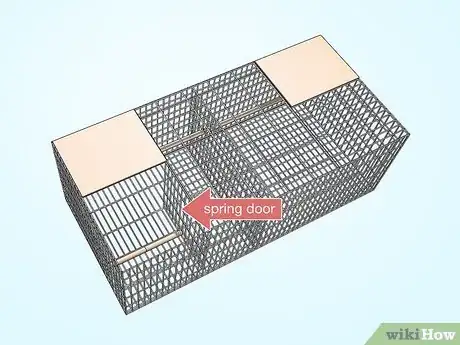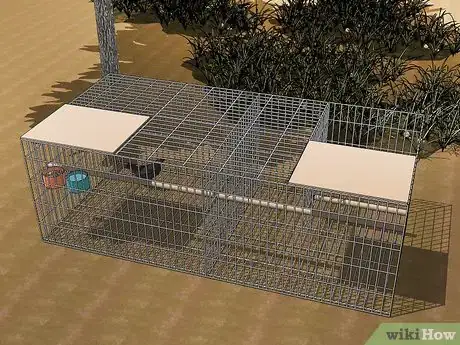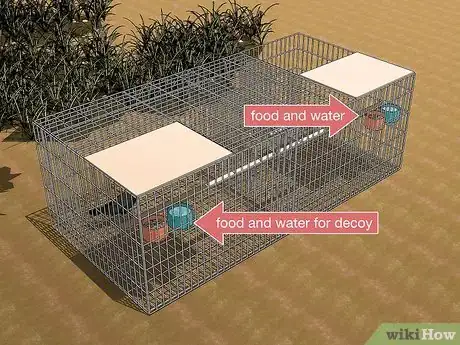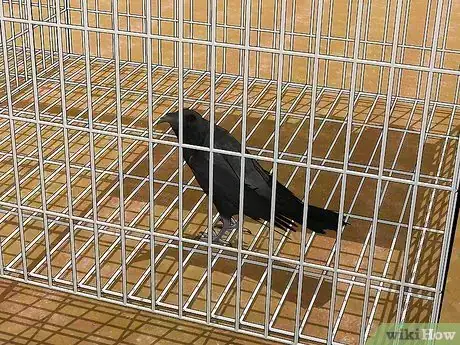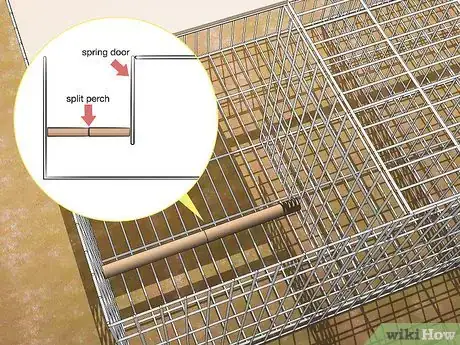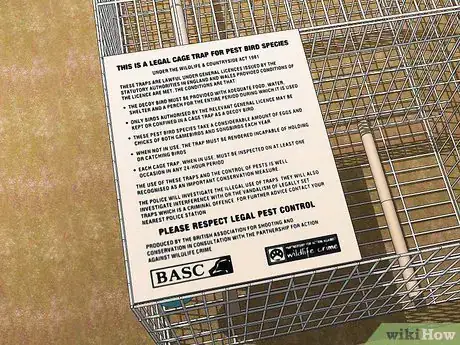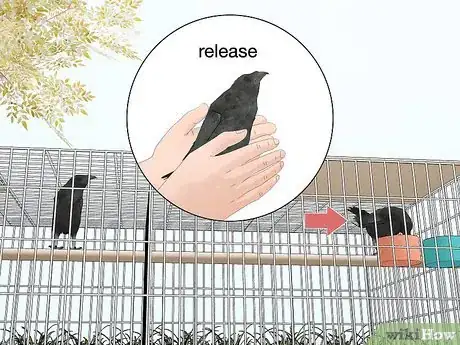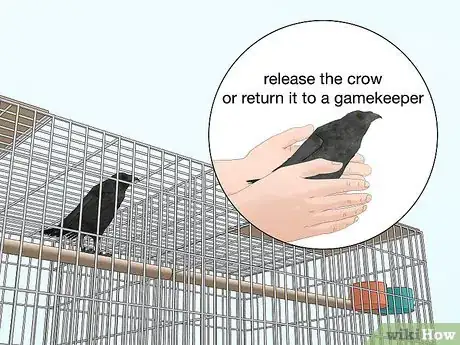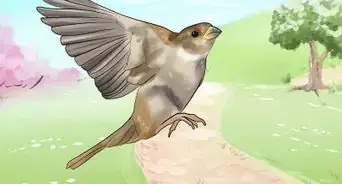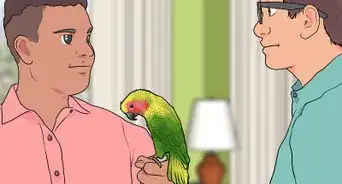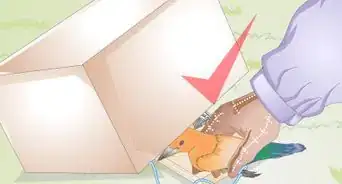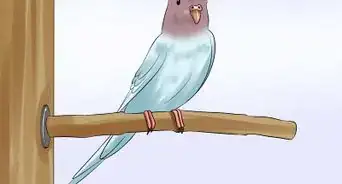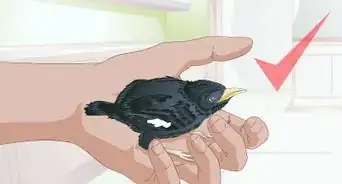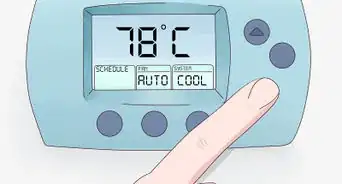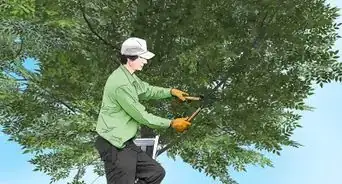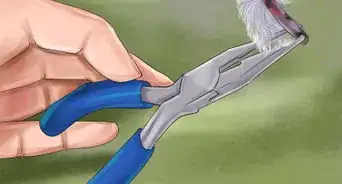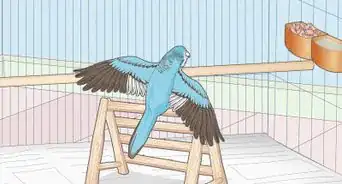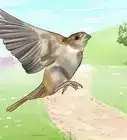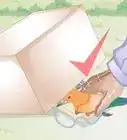This article was co-authored by wikiHow Staff. Our trained team of editors and researchers validate articles for accuracy and comprehensiveness. wikiHow's Content Management Team carefully monitors the work from our editorial staff to ensure that each article is backed by trusted research and meets our high quality standards.
There are 7 references cited in this article, which can be found at the bottom of the page.
This article has been viewed 22,132 times.
Learn more...
Catching crows is typically something that's best done by professionals, but if you really want to capture them yourself, there's a trap you can use to help you do it. Crows are a protected species, so it's important that you look up any rules or laws about handling them before you try to catch one. It's easiest to catch a crow if you place a live decoy bird in the trap to lure it in, but this isn't required. If you use a safe trap and offer the crows plenty of food and water, you'll hopefully catch one in no time.
Steps
Understanding Laws and Regulations
-
1Research your local laws about catching crows to make sure it’s legal. Different areas have different rules and regulations about catching crows because they’re a protected species. Before you take any action, do some research online to find out if you’re allowed to catch crows as well as any rules you need to know before doing so.[1]
- Type “laws for catching crows” and then your location into an online search engine.
- In the United States, you have to have permission by fish and wildlife authorities in your area to handle crows.
-
2Contact animal control if it’s a real crow pest problem. It’s always best not to try to catch crows yourself unless you have to. Many localities ask that you contact your local pest or animal control to deal with crows instead of trying to catch them yourself. If you’re trying to catch lots of crows or are worried about the process, call animal control to help you.[2]Advertisement
-
3Look into licensing for using larsen traps online. Many countries have a general license for the larsen traps that you can find online. This license lets you catch crows as long as you follow the rules to keep the birds safe. Check to see if your area or country requires a license, or even just knowledge about the use of larsen traps, before purchasing one.[3]
- Breaking the rules of the license can get you in trouble with the law.
-
4Provide proper care for the crow and live decoy while they're caught. While you can't keep the crow in captivity permanently or for a long time, it's important that you care for it responsibly in the short time that you do have it trapped. There are rules for what the crows and live decoy birds should have access to and how they should be treated. These include using a trap that’s large enough, giving them food and water, and providing them with a perch.[4]
- You'll need to check on the decoy bird at least once or twice a day to ensure it's healthy.
- Crows need proper shelter from the weather, too.
Setting the Trap
-
1Purchase a larsen trap from an online retailer. Larsen traps are wire cages that have a spring door, and they allow you to catch the crows without hurting them. They range in size, but it’s important to choose a trap that gives the crow enough space to move around easily and that also provides shelter from bad weather. Larsen traps work best when you place a live decoy bird in them to attract the crows.[5]
- These are also called live-catch traps.
-
2Get a live decoy bird through a gamekeeper or by catching one yourself. Before you set your trap, contact a local gamekeeper and ask them how to obtain a decoy bird. They may provide you with one, or they might give you advice on how to trap a different type of bird to use as a decoy.[6]
- For instance, the gamekeeper may tell you to catch a magpie, which is commonly used as a decoy bird to catch crows.
-
3Place the trap on the ground near a crow’s nesting spot. It's best to put the trap near a spot where you've seen crows before, like near a cluster of trees or a specific perch. Crows will come up to the trap from the ground, so place it on a level area near the crow nests or activity.[7]
- If 2 days pass and you still haven’t caught a crow, move the trap to a different spot to see if it works there.
- If you're not sure where to find the crows, place the larsen trap near trees and be prepared to test out several different spots.
-
4Put water and food in the trap for the live decoy bird and crows. If you're using a decoy bird, fill 2 separate metal dishes with food and 2 metal dishes with water. Choose foods that are safe for crows to eat like raw grains, nuts, worms, or fruits. Place one of each dish in each bird compartment so that both the decoy bird and crow can eat and drink.[8]
- Make sure the bird always has access to fresh food and water, whether it’s the decoy bird in the trap or a captured crow.
- You can also feed crows whole grain bread, whole grain pasta, and grubs.
- Avoid feeding crows apple seeds, dried beans, or mushrooms because they can make the birds sick.
-
5Place the live decoy bird in the larsen trap, if you're using one. There's a separate compartment for the decoy bird so that it can't escape when the split perch is set up. Place the decoy bird in this compartment, making sure it can reach its food and water, before closing it.[9]
- If using a live decoy bird isn't an option, make sure the food is super visible to crows so they’ll come.
-
6Set up the trap so the split perch is holding open the door. The larsen trap should come with a perch for the crow that’s split in half. Prop the two parts of the perch up so that they’re aligned and holding open the trap door. This will make it easy for a crow to land on the perch and fall into the trap.[10]
- When the crow lands on the split perch, the weight of the bird will cause the perch to break. The hinged door will close, and the crow will be trapped.
- Keep the live decoy bird's compartment closed so it doesn't escape.
-
7Place a sign on the trap explaining what the cage is. If someone happens to come across the larsen trap, it’s helpful for them to know what it is so they don’t move it or throw it away. Purchase a sign designed just for these traps that comes with detailed information on it explaining what the trap is and how it works.[11]
- Purchase a larsen trap sign from an online retailer.
- Create your own professional sign explaining that it’s a safe and legal trap for crows if needed.
Watching the Trap and Freeing the Birds
-
1Check on the trap and bird at least every 24 hours. This is a legal requirement to make sure that the birds are being cared for adequately. Visit the larsen trap at least once or twice a day to see if a crow has been captured and to make sure there’s enough food and water in there.[12]
-
2Release the crows back into the wild when you’re finished. Once you’ve caught crows and are done examining them, it’s required that you let them go back into the wild. Make sure they’re unharmed and healthy so that they’ll thrive again once they’re released.[13]
- You can do this by opening up the crow's side of the cage so the bird can fly away.
-
3Return the live decoy bird once you're finished catching crows. If you've released a crow and are planning on catching more, then leave the live decoy in the cage and make sure it has plenty of food and water. Otherwise, release the decoy bird back into the wild if you caught it, or return it to a gamekeeper.[14]
- Never keep a decoy bird in a larsen trap when the trap isn't in use.
References
- ↑ http://wildlifecontroltraining.com/wildlife-information/crows/
- ↑ http://wildlifecontroltraining.com/wildlife-information/crows/
- ↑ https://www.youtube.com/watch?v=w6BIonxBrX4#t=12s
- ↑ https://www.gwct.org.uk/advisory/guides/larsen-traps-england-scotland/
- ↑ https://www.gwct.org.uk/advisory/guides/larsen-traps-england-scotland/
- ↑ https://www.gov.gg/CHttpHandler.ashx?id=103538&p=0
- ↑ https://www.gwct.org.uk/advisory/guides/larsen-traps-england-scotland/
- ↑ https://www.youtube.com/watch?v=w6BIonxBrX4#t=48s
- ↑ https://www.gwct.org.uk/advisory/guides/larsen-traps-england-scotland/
- ↑ https://www.gwct.org.uk/advisory/guides/larsen-traps-england-scotland/
- ↑ https://www.youtube.com/watch?v=w6BIonxBrX4#t=2m35s
- ↑ https://www.youtube.com/watch?v=w6BIonxBrX4#t=1m30s
- ↑ https://www.gwct.org.uk/advisory/guides/larsen-traps-england-scotland/
- ↑ https://www.gov.gg/CHttpHandler.ashx?id=103538&p=0
